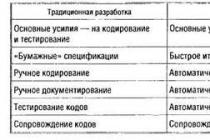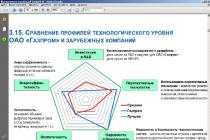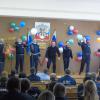Principles of vertical separation
Vertical separation and echelon
vertical separation called dispersal aircraft in height. To create vertical separation intervals, the concept is introduced echelon. This is a nominal height calculated at standard pressure and separated from other heights by the value of the established intervals.
Standard pressure value (QNE) - 760 mm Hg. Art. (1013.2 hectopascals, 29.921 inches of mercury) - the same throughout the world, but the vertical separation pattern may differ in different countries. When crossing the borders of airspaces in which different procedures operate, pilots change the level at the direction of the controller (either before entering the new zone or after, it depends on the direction of flight).
Semicircular system and its analogues
Vertical separation is usually carried out in a semi-circular system. This means that in the scheme the directions of flights from flight level to flight level alternate. For example, in Russia flight level 3300 m is assigned to aircraft moving from west to east (course from 0° to 179°). The next level of 3600 m is assigned when flying from east to west (course from 180° to 359°). The next 3900 m - again to the east, etc. The semi-circular pattern is used in almost all countries of the world, but may have its own characteristics.
For example, in Russia, the angle is measured according to the true (geographic) track angle, and in many other countries - according to the magnetic one. Due to the features geographical location countries, sometimes angles may not be measured from 0° and 180°. So, in Chile there is a shift of 30 °, and in France, New Zealand, Vietnam - by 90 °.
In some cases, a quadrant separation scheme is used, which was the main one for ICAO until 1963. It operates in many countries such as India, Bangladesh, Cambodia, Laos, Japan, also in the UK for visual and instrument flights in uncontrolled airspace below FL245. The first echelon is located in the I quadrant (0°-89°, magnetic track angle), the second - in the II quadrant (90°-179°), the third - in the III quadrant (180°-269°), the fourth - in the IV quadrant ( 270°-359°), the fifth - in the I quadrant, and so on.
Transition to Flight Level
Airfield atmospheric pressure (QFE) (in Russia) or pressure reduced to sea level (QNH) is set during takeoff and landing of the aircraft. Thus, the altimeter displays the actual altitude or altitude relative to sea level. The crew needs it to maintain landing approach and exit patterns.
Shortly after takeoff, the crew sets the standard pressure (QNE) to 760 mmHg. Art. The height at the intersection of which the standard pressure is established is called the transition height. When descending, the new pressure value on the altimeter is set when crossing the transition level . The transition level may vary for each aerodrome depending on atmospheric pressure, this value is usually available in the ATIS auto-information.
The calculation of the safe flight level and the transition altitude is carried out in such a way that between them (in true terms) there is a sufficient headroom even after setting a new pressure value on the altimeter. This provides a "clearance" between the transition level and the transition altitude, which prevents aircraft flying at flight level and height above ground (or sea level) from crossing at actual altitude. This height range is called the transition layer.
Level flight in the transition layer is prohibited. In this range, only descent or climb is possible.
Vertical separation below the lower level
The flight does not always take place at flight level. When there is no need to climb the lower flight level, flights are carried out according to the minimum atmospheric pressure on the route, reduced to sea level. At the same time, special rules for vertical separation apply. For example, in Russia, flights with speeds of no more than 300 km/h are separated after 150 m, with speeds over 300 km/h - after 300 m.
Separation in Russia
| echelon, m | direction | echelon, m |
|---|---|---|
| 15100 | ← | |
| → | 14100 | |
| 13100 | ← | |
| → | 12100 | |
| 11600 | ← | |
| → | 11100 | |
| 10600 | ← | |
| → | 10100 | |
| 9600 | ← | |
| → | 9100 | |
| 8600 | ← | |
| → | 8100 | |
| 7800 | ← | |
| → | 7500 | |
| 7200 | ← | |
| → | 6900 | |
| 6600 | ← | |
| → | 6300 | |
| 6000 | ← | |
| → | 5700 | |
| 5400 | ← | |
| → | 5100 | |
| 4800 | ← | |
| → | 4500 | |
| 4200 | ← | |
| → | 3900 | |
| 3600 | ← | |
| → | 3300 | |
| 3000 | ← | |
| → | 2700 | |
| 2400 | ← | |
| → | 2100 | |
| 1800 | ← | |
| → | 1500 | |
| 1200 | ← | |
| → | 900 |
In Russia, as in some CIS countries, the metric separation system inherited from the USSR is used. However, in Lately the possibility of switching to the RVSM system, which is accepted in most countries of the world, is widely discussed. As an experiment, RVSM has been introduced in the area of responsibility of the Rostov (in the open sea area) and Kaliningrad ATC centers for transit flights.
Separation is carried out in a semicircular pattern as follows.
The vertical separation interval is set at 300 m from FL 900 to FL 8100; 500 m interval - from flight level 8100 to flight level 12100; interval 1000 m - from flight level 12100. Thus (see table):
- with a true ground angle from 0° to 179° (inclusive), flight levels are set: 900, 1500, 2100, 2700, 3300, 3900, 4500, 5100, 5700, 6300, 6900, 7500, 8100, 9100, 10100, 1 1100, 12100 , 14100, etc.;
- with a true ground angle from 180° to 359° (inclusive), flight levels are set: 1200, 1800, 2400, 3000, 3600, 4200, 4800, 5400, 6000, 6600, 7200, 7800, 8600, 9600, 10 60 0.11600 , 13 100, 15 100 m, etc.
Separation according to ICAO standards
RVSM separation
Reduced vertical separation minima(English) Reduced vertical separation minima (RVSM) ) - a system of measures designed to increase the capacity of the airspace by reducing the established intervals between echelons. Already introduced in many countries, it provides for 1,000-foot intervals between echelons in upper airspace. Although this value is not unambiguous, the PRC, for example, has introduced the RVSM metric system (see below).
The use of reduced vertical separation minima requires not only the adoption of relevant regulations, but also the technical readiness of the aircraft and crew to comply with these standards. A large number of non-certified aircraft, in particular in Russia, hinders the rapid adoption of RVSM regulations. If an aircraft is not certified to operate in the reduced minima system, it cannot be cleared to the altitude range where RVSM is in force, and must fly to the appropriate flight levels below.
Features of vertical separation in some countries
Separation in the UK
Separation rules in the UK differ markedly from ICAO standards.
Up to FL245, a quadrant system operates in uncontrolled airspace. When the direction of the magnetic track angle (MPU) is 0°-89°, an odd thousand level is selected, for example, FL130. At MPA 90°-179° - odd thousand level plus 500 feet (FL135), at MPA 180°-269° - even thousand level (FL140), at MPA 270°-359° - even thousand level plus 500 feet, for example FL145 , etc.
Above FL245, the following semi-circular pattern applies. At MCL less than 180° - the first echelon is FL250, and then with the addition of 2000 feet to FL 330, then with the addition of 4000 feet. At MCL more than 180°, but less than 360° - FL260 level and further with the addition of 2000 feet to FL 350, then with the addition of 4000 feet.
RVSM has also been introduced in the UK.
Separation in New Zealand
Due to geography, New Zealand uses a 90° semi-circular pattern. Characteristic is the allocation of separate echelons for visual and instrumental flights.
When flying under visual flight rules (VFR) below 13,000 feet (QNH): at MCL 270°-89°, an odd thousand feet altitude plus 500 feet is occupied. At MPA 90°-269°, the altitude is an even thousand feet plus 500 feet. At flight level above FL150: at MPA 270°-89° an odd thousand feet plus 500 feet (including FL155) is engaged, at MTA 90°-269° an even thousand feet plus 500 feet is engaged.
When flying under instrument flight rules (IFR) below 13,000 feet: At MPA 270°-89°, an odd thousand feet altitude is occupied. At MPA 90°-269°, the height of an even thousand feet is occupied. At flight level above FL150: at MPA 270°-89°, an odd thousand-foot flight level is engaged (including FL150), at MTA 90°-269°, an even-thousand-foot flight level is engaged. When flying above FL410 at MPA 270°-89°, flight levels are occupied with an interval of 4000 feet, starting from FL450. At MPA 90°-269°, trains are engaged at intervals of 4000 feet, starting from FL430.
Separation in China
| echelon, m | direction | echelon, m |
|---|---|---|
| → | 14900 | |
| 14300 | ← | |
| → | 13700 | |
| 13100 | ← | |
| → | 12500 | |
| 12200 | ← | |
| → | 11900 | |
| 11600 | ← | |
| → | 10300 | |
| 11000 | ← | |
| → | 10700 | |
| 10400 | ← | |
| → | 10100 | |
| 9800 | ← | |
| → | 9500 | |
| 9200 | ← | |
| → | 8900 | |
| 8400 | ← | |
| → | 8100 | |
| 7800 | ← | |
| → | 7500 | |
| 7200 | ← | |
| → | 6900 | |
| 6600 | ← | |
| → | 6300 | |
| 6000 | ← | |
| → | 5700 | |
| 5400 | ← | |
| → | 5100 | |
| 4800 | ← | |
| → | 4500 | |
| 4200 | ← | |
| → | 3900 | |
| 3600 | ← | |
| → | 3300 | |
| 3000 | ← | |
| → | 2700 | |
| 2400 | ← | |
| → | 2100 | |
| 1800 | ← | |
| → | 1500 | |
| 1200 | ← | |
| → | 900 | |
| 600 | ← |
The system is semi-circular, reporting from 0° and 180° true track. The separation scheme is given in the table. At flight levels from 8900 to 12500 the reduced separation minimum is 300 meters, above - 500 meters.
Longitudinal separation
Longitudinal separation refers to the dispersion of aircraft at the same height in time or distance along the track.
On international air routes, two types of longitudinal separation are used: by time and by distance.
Longitudinal separation in time is:
1. On the same route and flight level:
- 3 min if V1 > V2 at 40 knots;
- 5 min if V1 > V2 for 20 knots;
- 10 min if V1 = V2 (if there is enough RHT);
- 15 min if V1 = V2 (in the absence of sufficient RHT).
2. On crossing courses at the same echelon:
- 15 min in the absence of a sufficient amount of RNT.
3. During climb and descent, if an aircraft crosses the level of another aircraft on a common track:
- 10 min in the presence of a sufficient amount of RNT;
- 15 min in the absence of a sufficient amount of RNT;
- 5 minutes (if the level crossing of another aircraft occurs no later than 10 minutes from the passage of the fixed RNT).
Longitudinal separation distance (if DME is present) is:
On the same route and level:
- 10 nautical miles if V1 > V2 by 20 knots or more;
On cross courses:
- 10 nautical miles if V1 > V2 by 20 knots or more;
- 20 nautical miles if V1 = V2.
4. Climb and descent - 10 miles in all cases.
Lateral separation
Lateral separation refers to the dispersion of aircraft at the same altitude by the distance or angular displacement between their tracks.
Separation of the right side
In the case of oncoming traffic of aircraft with climb or descent, each aircraft must keep to the right side of the track so as to be slightly to the right of the axis of the track. The principle of separation - to follow the route a little to the right - is the official principle. How far to the right is not specified.
Separation of international air routes over the ocean
It is carried out in degrees of latitude or distance:
- on North Atlantic routes, the distance between adjacent routes must be at least 120 nautical miles; Wikipedia - Chronicle of the Great Patriotic War 1941: June July August September October November December 1942: January ... Wikipedia
Chronicle of the Great Patriotic War 1941: June July August September October November December 1942: January February March ... Wikipedia
"Red Army" redirects here; see also other meanings. Workers' and Peasants' Red Army of the RSFSR, the Union of Soviet Socialist Republics Emblem of the Revolutionary Military Council of the RSFSR. 1918. Years of existence ... Wikipedia
"Red Army" redirects here; see also other meanings. Worker-peasant Red Army of the USSR (Union of Soviet Socialist Republics) Emblem of the RVS RSFSR, 1918. Years of existence February 23, 1918 February 25, 1946 ... Wikipedia
Military (Greek taktiká the art of building troops, from tásso I build troops), an integral part of military art (See Military art), including the theory and practice of preparing and conducting combat (See Battle) by formations, units (ships) and ... ... Great Soviet Encyclopedia
Echelons of power
Echelons of power ESHELON, -a, m.
Explanatory dictionary of Ozhegov. S.I. Ozhegov, N.Yu. Shvedova. 1949-1992 .
See what the "Echelons of Power" are in other dictionaries:
echelons of power- bookstore The ruling circles, persons directly in power ... Dictionary of many expressions
Pub. On the structures, subdivisions of the hierarchical structure of management. SP, 252; BTS, 1528; Mokienko 2003, 149 ...
Pub. Governing bodies, persons directly standing in power. Mokienko 2003, 149 ... Big dictionary of Russian sayings
echelon- a, m. echelon m. échelle staircase. 1. outdated. Battle order, when the location of military units, subunits is made in depth or in ledges, and not along the front. BAS 1. The center of the line launched an attack to the right with battalion echelons. 1840. Marmont 2… … Historical Dictionary of Gallicisms of the Russian Language
- حسين محمود حسن الشافعي ... Wikipedia
Second echelon. Pub. Secondary in terms of importance, influence of the ruling bodies, state structures, faces. Mokienko 2003, 149. Upper (higher) echelons [of power (parties, states)]. Pub. Ruling bodies, persons directly standing ... Big dictionary of Russian sayings
INDIA- [Republic of India; Hindi Bharat Ganarajya; English Republic of India], state in South. Asia. It is washed by the waters of the Indian Ocean: in the west by the Arabian m., in the southwest by the Laccadive m., in the east by the Bay of Bengal; in the south is the Mannar Hall. and Polksky ... ... Orthodox Encyclopedia
Aisingyoro Hongli Aisingioro Hongli (Chinese: 爱新觉罗弘历; September 25, 1711 – February 7, 1799) was the sixth Chinese Emperor of the Qing Dynasty. For 59 years (1736-1795, one of the longest reigns in Chinese history) ruled under the motto "Qianlong" (乾隆). ... ... Wikipedia
Nikolaevich (b. 1948) Russian satirist writer Aphorisms, quotes Zadornov Mikhail. Biography One hundred years will pass and people will learn about our time from textbooks and encyclopedias. But ... Textbooks, as well as encyclopedias, are always compiled ... ... Consolidated encyclopedia of aphorisms
Books
- Medicine man. Thieves' Siberia (set of 3 books), B.K. Sedov. Trilogy about the Witch Doctor "Thieves' Siberia". "The Hermit" The healer, tired of blood, from the loss of loved ones, decides to start new life and leaves for Siberia, where he hopes to find his own ...
- Thrawn. Star Wars, Zan T. Grand Admiral Thrawn, one of the most cunning and ruthless warriors in the history of the galaxy. First appearing in the pages of Timothy Zahn's Heir to the Empire, Thrawn has taken a firm place…
:: Current]
vertical separation called the dispersion of aircraft in height. To create vertical separation intervals, the concept is introduced echelon. This is a nominal height calculated at standard pressure and separated from other heights by the value of the established intervals. Standard pressure value (QNE) - 760 mm Hg. Art. (1013.2 hectopascals, 29.921 inches of mercury) - the same throughout the world, but the vertical separation scheme may differ in different countries. When crossing the borders of airspaces in which different procedures operate, pilots change the level at the direction of the controller (either before entering the new zone or after, it depends on the direction of flight).
Introduction
RVSM- R educated V vertical S separation M inimum, Reduced Vertical Separation Minimum System at 1000ft (300m) intervals
Non RVSM-system with normal 2000ft (600m) tier intervals
To ensure that the altitudes of the aircraft (aircraft) do not coincide with the altitudes of aircraft flying in the opposite direction, pilots select the flight level before the flight according to the direction of flight, technical characteristics of the aircraft, weather conditions, etc. This is called a semi-circular separation system.
Aircraft flying in one direction select certain flight levels, aircraft flying in the opposite direction select other flight levels. This allows you to protect the aircraft from a head-on collision.
If the flight is under the control of the controller, you can fly in any direction.
Check which separation rules are used by the country where you are going to fly.
Echelon separation
In the last century, altimeters (altitude measuring instruments) were not accurate enough above 29,000 feet (8,839.20 m), so there was a mandatory distinction between flight levels up to 29,000 feet (8,840 m) in 1,000 feet (300 m) and above 29,000 feet (8 840 m) to 2000 feet (610 m).
Over time, altimeters improved and the RVSM system appeared which removed the 2000 (610m) ft altitude delimitation above the 29000 ft (8840 m) level and led to the creation of an additional 6 steps of altitude between FL 290 and FL 410 (29000 ft (8840 m) flight levels m) and 41,000 feet (12,497 m)), thanks to this, fuel costs and flight delays have been reduced.
RVSMAndMNPS
In RVSM, a vertical separation of 1,000 feet (305 m) is maintained up to FL410. Above FL 410, only odd flight levels are used to ensure that the vertical distance between aircraft is always 2,000 feet (610 m).
Only those aircraft that comply with the MNPS (Minimum Technical and Navigational Requirements) can operate flights in the RVSM system. If aircraft do not meet these requirements, they must fly below 29,000 feet (8,840 m) or above 41,000 feet (12,497 m)
Standard East-West semi-circular echelon system.
Level selection algorithm:
- Determine the magnetic course
- Decide which system you will fly in (RVSM or Non-RVSM)
- Choose a train
- Note: IFR flight levels (FL) usually end with "0" (FL40, FL 50, FL 60) and VFR levels usually end with "5" (FL45, FL 55, FL 65).
- Do not forget to fill in the field in the flight plan with the selected flight level
Echelon distribution
Echelons are used above the transition height.
The minimum spacing must be 1000 feet (300 m).
Magnetic heading (000º - 179º) East - levels ODD FL: 70, 90, 110, 130, 150...... 250, 270, 290, 310.... 370, 390, 410
Magnetic heading (180º - 359º) west - EVEN levels FL: 80, 100, 120, 140...... 240, 260, 280, 300... 360, 380, 400.
If the flight is performed above 41,000 feet (12,497 m), then the interval is no longer 1,000 feet (305 m), but 2,000 feet (610 m) and the flight levels are only ODD, we cannot choose FL 420.
Magnetic heading (000º - 179º) east - FL levels: 450, 490, 530, 570....
Magnetic heading (180º - 359º) west - FL levels: 430, 470, 510, 550...
Table for RVSM IFR flights (and controller-controlled VFR)

Table for VFR flights in the RVSM system

Note: VFR should not be flown above FL 200 unless otherwise permitted by local regulations.
Non-RVSM (ICAO)
Non-RVSM (ICAO) uses 1000 ft (300 m) altitude separation up to FL 290 and odd only after to ensure 2000 ft (600 m) separation between aircraft. So below FL 290 the separation between echelons is 1000 feet (305 m)
Magnetic Heading (000º - 179º) East - Levels ODD FL: 70, 90, 110, 130, 150...... 250, 270, 290
Magnetic heading (180º - 359º) west - levels EVEN FL: 80, 100, 120, 140...... 240, 260, 280
Above FL 290 FL 2000 ft (610 m) and all ODD
Magnetic heading (000º - 179º) east - FL levels: 290, 330, 370, 410, 450
Magnetic heading (180º - 359º) west - FL levels: 310, 350, 390, 430
Table for IFR Non-RVSM flights (and VFR under control of the controller)

Table for VFR flights Non-RVSM

Note: VFR flight cannot be flown above FL 200 unless allowed by division rules
North-South semi-circular echelon system
Some countries may have a different separation system. If it is not indicated which one, East-West is used by the standard. However, if the system is different from the standard, you will be informed which flight level to occupy and which system to use.
For example, in France, Spain, Portugal and Italy, odd levels are used in directions from 090° to 269° and even levels in directions from 270° to 089° (on French maps, a small arrow applied next to the names of airways shows the path for ODD levels ). This is also a semi-circular separation system, but already between north and south.
As mentioned above, up to FL 410, a separation between echelons of 1000 feet (300 m) is used, above only odd ones, i.e. separation 2,000 feet (600 m). In this separation system, the same rule applies. Also, only aircraft with MNPS can fly from FL 290 to FL 410, but we have a simulator, so it is assumed that all airliners flying above FL 290 meet the requirements and are available for flights at these altitudes.
Moving north - even echelons, moving south - odd
Magnetic heading (180º - 359º) north - levels ODD FL: 70, 90, 110, 130, 150...... 250, 270, 290
Magnetic heading (000º - 179º) south - levels EVEN FL: 80, 100, 120, 140...... 240, 260, 280
Above FL 410 odd only, 2000 ft (600 m) tier separation guaranteed.
Magnetic heading (180º - 359º) north - FL levels: 430, 470, 510, 550
Magnetic heading (000º - 179º) south - FL levels: 450, 490, 530, 570
RVSM North-South separation table for IFR flights (and VFR under controller control)

RVSM North-South Separation Table for VFR Flights

Note: VFR flight cannot be flown above FL 200 unless permitted by local regulations
From East-West to North-South
Difference between East-West and North-South separation system.
For example, you are flying in the direction of 220º of the E-W (East-West) system, you select FL 320, FL 340 or FL 360, but if you fly in the N-S (North-South) system, you will already choose FL 330, FL 350 or FL 370.
Now another option.
You are about to fly on a heading of 060º, which is the opposite of 220º, and you are not using S-S system, then they must choose levels for example FL 330, FL 350 or FL 370, according to the rules mentioned above.
Air spaceRVSMtransition. Let's move onfrom RVSM toNon- RVSM
RVSM Transition is the airspace where the transition from RVSM to Non-RVSM and vice versa is carried out, and according to the rules to avoid collision!
Below is a table where you can see how to make the transition correctly.
Important fact! If you use RVSM Transition incorrectly, you may see an aircraft with the opposite movement at your flight level, which is very dangerous!
RVSM Transition in the East-West separation system

RVSM Transition in the North-South separation system

Separation in China
IN China for a long time, a metric separation system was adopted, which, however, differed from the Russian one. Since 2007, the RVSM system has been in force, also metric.
The system is semi-circular, reporting from 0° and 180° true track. The separation scheme is given in the table. At flight levels from 8900 to 12500, the reduced separation minimum is 300 meters, above - 500 meters.

Separation in Russian Federation
Since November 17, 2011, separation based on numbered echelons has been introduced in Russia, the name of which corresponds to the height in hundreds of feet, although they continue to be expressed in meters in the documentation. The separation scheme thus follows the RVSM separation scheme that is used in most of the world's airspace. However, the changes did not affect the calculation of heights below the lower echelon, where the height is still expressed in meters. What does it mean? Simply put, new system separation in Russian airspace works like this:
during takeoff, height in meters to transition height- further numbers of echelons;
when descending, the number of echelons to transition level- further height in meters.
When submitting a flight plan, always select the correct flight level based on direction. Remember the simple rule: to the East - odd echelons, to the West - even.
There are exceptions to this rule. There is a special operating procedure (SOP) “Use of north-south separation for part of the airspace of the Rostov-control sector”. In the western part of the Rostov-control sector, in the areas of the Rostov and Krasnodar airfields, north-south separation is used.
SOP application limits:
from the western side: border with Ukraine
from the east side: points KANON KA ER LA inclusive.
In the north direction, even echelons are used, in the south - odd
VERTICAL SEPARATION OF AIRCRAFT IN THE AIRSPACE OF THE RUSSIAN FEDERATION

Printable PDF table
©2007-2014, Virtual Airline X Airways
TSM Woodworking Plant is engaged in production of house kits from profiled timber of natural moisture, development of projects and construction of houses, baths, arbors from profiled timber own production In Nizhniy Novgorod. Manufacturing profiled timber– high-tech process, high-quality raw materials and full automation allows to produce construction material with excellent technical specifications. Automatic quality control guarantees strict compliance of the manufactured timber with the most stringent building codes and requirements.
Thanks to the stepwise processing system of raw materials profiled timber acquires such properties as increased strength, resistance to corrosion and deformation processes, fire resistance. At the same time, the original qualities of natural wood are preserved: aesthetics, low thermal conductivity, environmental friendliness, not to mention the fact that wooden houses have a special energy of warmth and tranquility. Being a natural material, profiled timber does not require any additional finishing, and in itself is an adornment of any structure.
Houses, baths, gazebos from profiled timber
All these qualities make profiled timber excellent building material wooden houses, baths, gazebos. Even the aggressive impact of high humidity, high and low temperatures, typical for the Nizhny Novgorod region, is "nothing" for this material. A house made of profiled timber will serve you for many years, embodying the dream of an ideal place to live. And a bathhouse and a gazebo made of timber will become a harmonious addition to the ensemble, combining practicality and aesthetics.
Another area of activity of our company is the drying of wood of various species at a bargain price and in any volume! The drying process takes place in special convection chambers with strict observance of the temperature and humidity conditions. The drying period depends on the type of wood and the volume of lumber, and usually ranges from 7 to 10 days, depending on the time of year.
ON THE TRANSITION TO THE ICAO VERTICAL SEPARATION SYSTEM AND REDUCED VERTICAL SEPARATION INTERVALS (RVSM) FROM FLAT 290 TO FLIGHT 410 INCLUDING IN THE AIRSPACE OF THE RUSSIAN FEDERATION FROM 17 NOVEMBER 2011
1. The system of vertical separation of aircraft in the airspace of the Russian Federation, corresponding to Table a) of Appendix 3 of Appendix 2 to the Convention on International Civil Aviation, will be introduced throughout the airspace of the Russian Federation at 00.00. November 17, 2011 UTC
2. Aircraft operators intending to fly in the airspace of the Russian Federation with RVSM must have aircraft equipped in accordance with the requirements for the minimum characteristics of on-board systems (RVSM MASPS) and the approval of aircraft for flights in RVSM conditions.
An RVSM flight permit issued in any ICAO region will be valid for RVSM flights in Russian Federation airspace.
3. For aircraft not approved for flights in RVSM conditions and not being state aviation aircraft, ATS units assign flight levels below RVSM airspace.
4. In order to perform flights in the airspace of the Russian Federation, the ATS authorities in the flight plan of the aircraft (FPL) must be provided with reliable information on the approval of the aircraft for flights in RVSM conditions.
5. Before the start of each flight in the airspace of the Russian Federation and over the high seas in the area of responsibility of the Russian Federation (FIR), the FPL must be transferred no later than 3 hours before the departure time of the aircraft in accordance with the requirements of the AIP of Russia.
If there is a change in the operating aircraft and the designated RVSM approval status changes, the operator shall submit a new FPL.
All operators of RVSM-approved aircraft indicate the approval status by entering the letter "W" in Item 10 of the ICAO flight plan, regardless of the requested flight level.
When planning flights in the airspace of the Russian Federation with RVSM, operators of state aircraft enter the letter "M" in paragraph 8 of the ICAO flight plan.
All operators of non-RVSM approved state aircraft, when requesting FL 290 and above, enter the designator “STS/NONRVSM” in item 18 of the ICAO flight plan.
With the exception of state aircraft, aircraft operators intending to fly in a formation flight plan such a flight outside RVSM airspace:
Do not include the letter “W” in item 10 of the ICAO flight plan, regardless of the RVSM approval status of the aircraft in the group;
Enter the designation "STS/NONRVSM" in item 18 of the ICAO flight plan.
6. Vertical separation of aircraft in the airspace of the Russian Federation will be carried out at established intervals, expressed in meters relative to the height below the transition level, and through flight levels (FL) when flying at the transition level and above.
When conducting air-to-ground two-way radio communications between the crew of an aircraft flying at flight level and the air traffic controller, the numerical values of flight levels (FL) will be used in accordance with Table a) of Appendix 3 of Appendix 2 to the Convention on International Civil Aviation.
When conducting two-way air-to-ground radio communications between the crew of an aircraft flying below the transition level and the air traffic controller, flight altitudes expressed in meters will be used, and the unit of measurement must be indicated - meters.
The vertical position of an aircraft flying in the aerodrome area below the transition level will be given by the air traffic controller and reported by the crews in terms of relative height (QFE) in meters.
ICAO cruise levels are used throughout the airspace of the Russian Federation, and reduced vertical separation intervals (RVSM)*,*** are used from flight level 290 to flight level 410 inclusive.
*Reduced vertical separation minima(English) Reduced vertical separation minima (RVSM)) - a system of measures designed to increase the capacity of the airspace by reducing the established intervals between echelons. Already introduced in many countries, including Russia, it provides for intervals of 1000 feet between echelons in the upper airspace (in the range FL290 - FL410).
In the airspace of the Russian Federation, the following minimum vertical separation intervals are established for aircraft flights according to the instrument flight rules:
a) 300 m - up to flight level 12500 m (flight level 410);
b) 600 m - above flight level 12500 m (flight level 410).
In the airspace of the Russian Federation with reduced vertical separation interval (RVSM) from FL 8850 m (FL 290) to FL 12500 m (FL 410) inclusive flights of aircraft not approved for flights with reduced vertical separation interval (RVSM) are prohibited, except for state aircraft, aircraft flying as part of a group, aircraft that, for any reason, have lost the ability to maintain a given flight level in flight, including those flying with a failed radio connection. In these cases, a minimum vertical separation interval of 600 m is established between the said aircraft.
· The procedure for admission of aircraft and operators to flights with reduced vertical separation interval (RVSM), as well as control over aircraft height-keeping characteristics (monitoring) is determined by the Ministry of Transport of the Russian Federation.
· The minimum vertical separation interval between aircraft flying under visual flight rules above the transition level to FL 8100 m (FL 265) is 300 m.
· The minimum vertical separation interval above transition level between aircraft flying under visual flight rules and aircraft flying under IFR should be at least 300m.
When flying below the lower flight level, the vertical distance between the lower flight level and the flight altitude must be at least 300 m.
The vertical distance between the circling altitude and the lower flight level of the holding area must be at least 300 m.
The vertical distance between aircraft in the area of the aerodrome must be at least 300 m. radar control and the longitudinal distance between them is at least 5 km, the vertical interval should be at least 150 m.
Assign simultaneously the same level (altitude) for aircraft flights under VFR and IFR (OPFR) prohibited.
Vertical separation in the airspace is carried out in a semicircular system relative to the true meridian according to the application.
In the area of a controlled aerodrome, in the area of aerodrome control service, in the area of approach control service and in holding areas, vertical separation is established regardless of the direction of aircraft flight.
The minimum vertical separation between aircraft flying at supersonic speeds, as well as between aircraft flying at supersonic and subsonic speeds, should be 1000 m.
The minimum distance between the transition level and the transition height must be at least 300 m.
When changing the flight level at the turning point of the route, due to a change in the general direction of the flight, the occupation of a new flight level must be carried out 20 km before the passage of the specified point, with the permission of the controller, in compliance with the established intervals.
If the given true track angles of most sections of the route (route) are within one semicircle, and individual sections are within the limits of another, then uniform flight levels can be established for the entire airway (route), provided that flight safety measures are observed.
In the area of the aerodrome (air hub) and in the holding areas, vertical separation is carried out in accordance with the established intervals, regardless of the given flight path angles.
**The direction of the track is based on True North.
***Due to the fact that units of quantities are used in the Russian Federation international system units (SI) adopted by the General Conference on Weights and Measures and recommended for use international organization legal metrology, absolute heights, elevations and relative heights are measured in meters. To ensure the flights of aircraft equipped with vertical separation facilities that measure altitude in non-systemic units, the Russian Federation allows the measurement of absolute and relative heights in feet (ft). The assignment of the flight level by the ATS unit is carried out in the flight level numbers.














